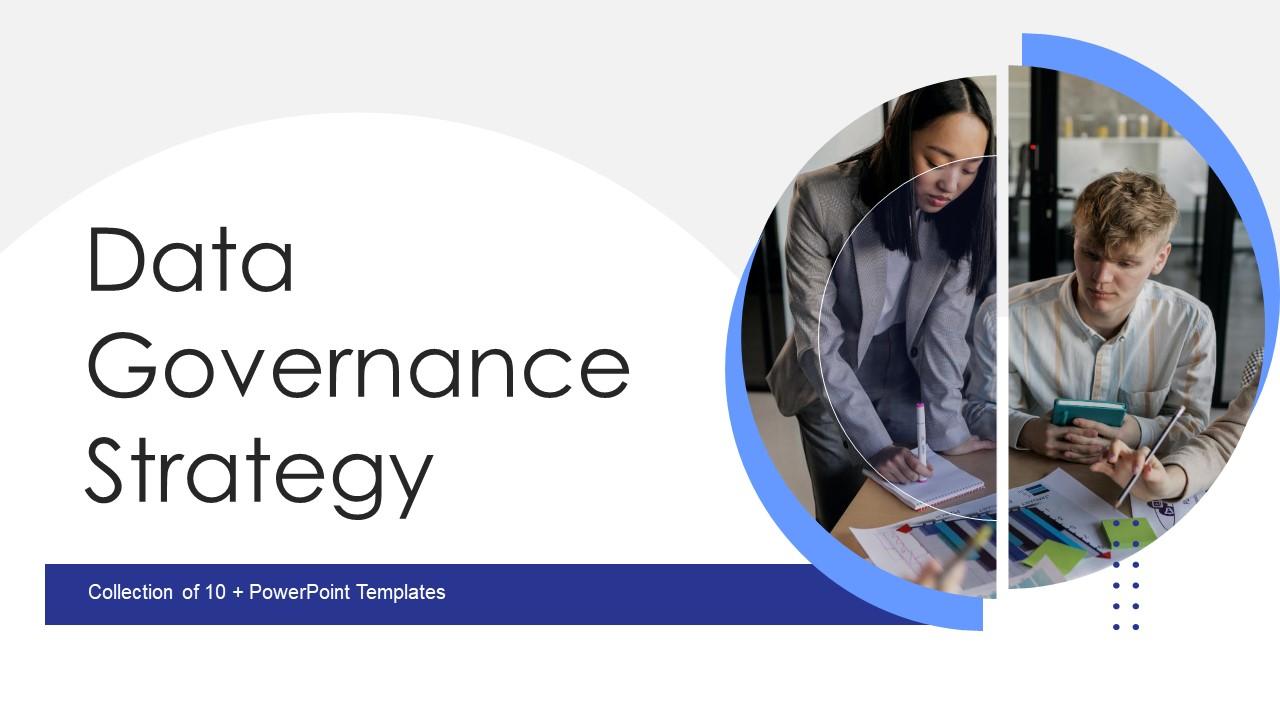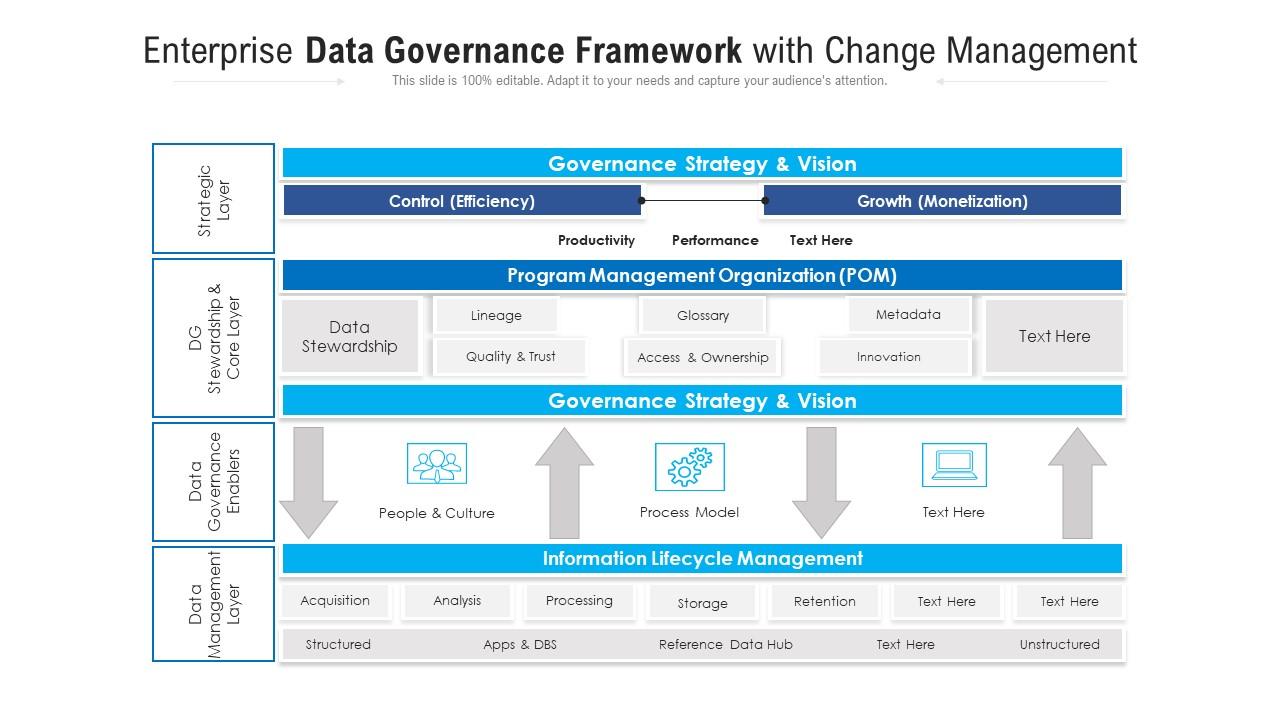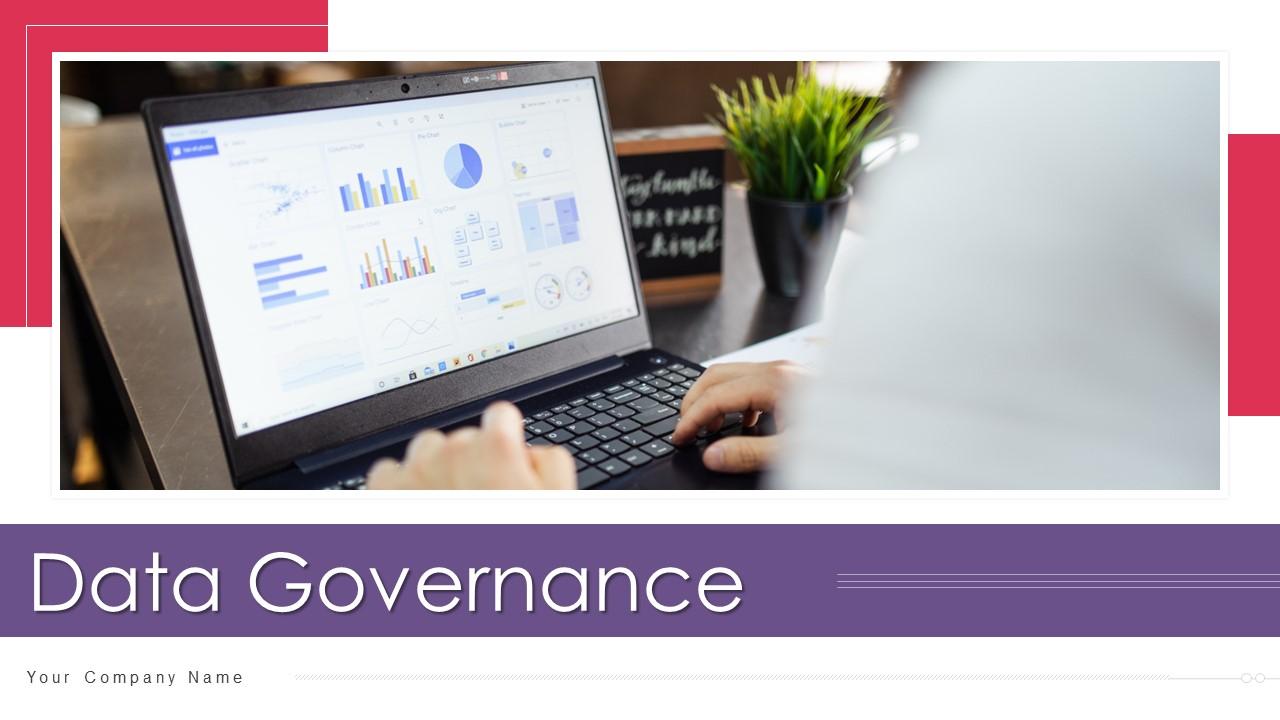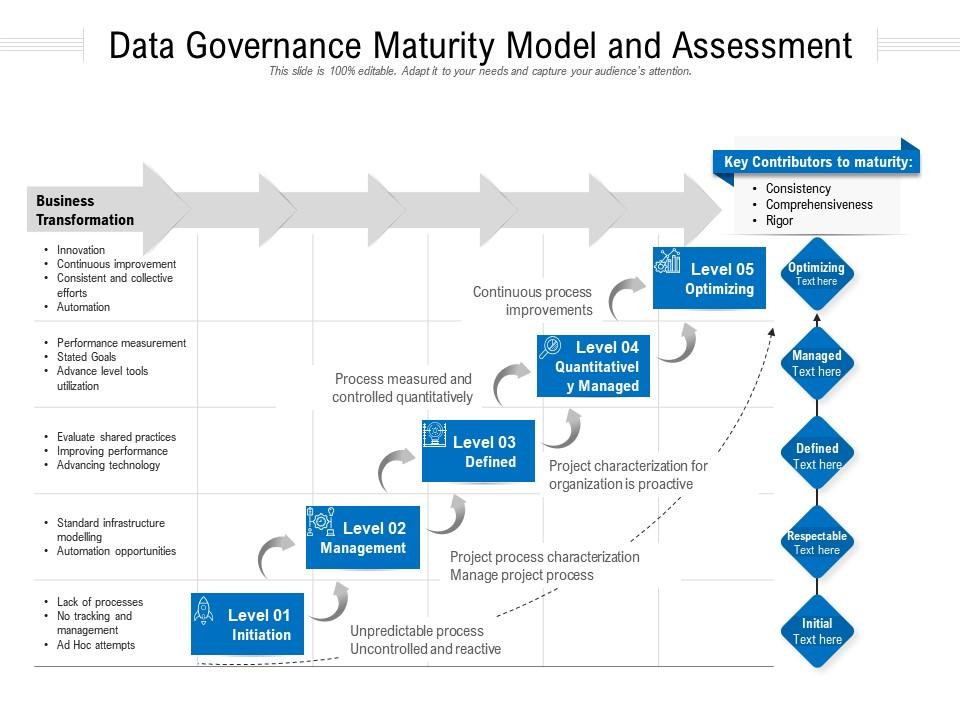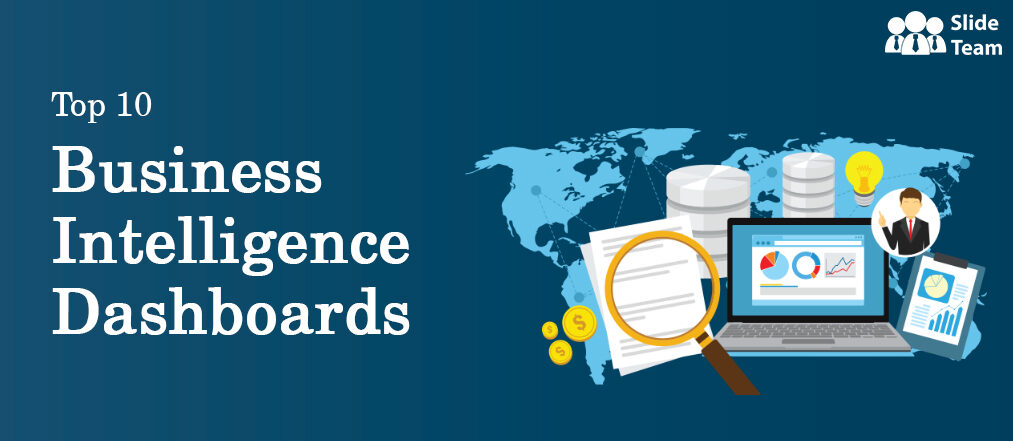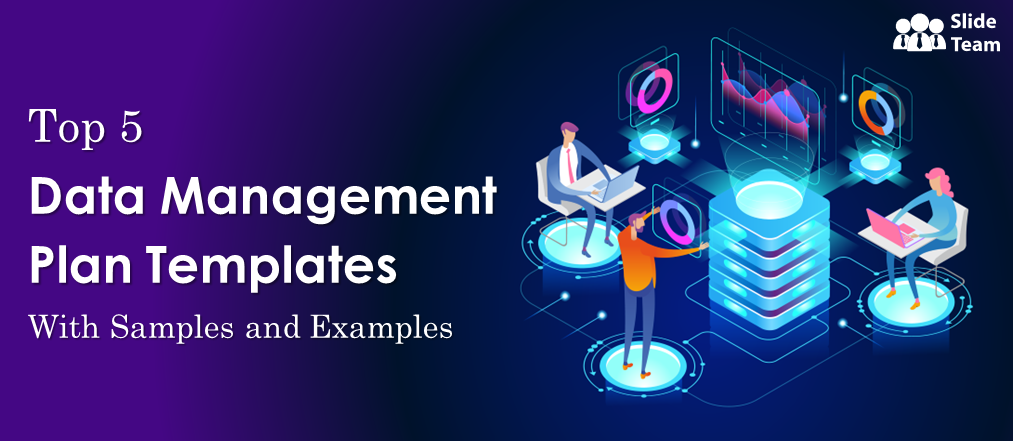In the binary world of ones and zeros, where data is the key currency, data governance is the emerging business sunrise sector. With data emerging as the lifeblood of modern business, data governance has risen as its watchful, vigilant guardian, ensuring that the flow of information through data remains purposeful and productive.
To use this well, data governance templates emerge as the strategic anchors. Imagine your data as fundamental threads awaiting skillful interlacing into the intricate fabric of knowledge. These PPT Presentations serve as adept craftsmen, weaving data elements into a network of insights conducive to actionable decision-making. Whether you are a seasoned data strategist, a business analyst, or a researcher, these templates extend beyond just being a mere compass. These provide an all-encompassing map for informed and strategic navigation.
The 100% customizable nature of the templates provides you with the desired flexibility to edit your presentations. The content-ready slides give you the much-needed structure.
Let’s explore!
Template 1: Data Governance PPT Deck
This comprehensive PPT Template delves deep into core aspects of effective data governance. It offers insights, addressing crucial facets that include the necessity for robust data governance and the common challenges that companies face. The differentiating factors between manual and automated data governance approaches are also outlined. Use this template to navigate through a structured breakdown of the data governance framework, empowering you to comprehend its complex layers with ease. Have a better understanding of diverse roles and responsibilities that constitute a well-functioning data governance ecosystem. This PPT Set also illuminates strategies for initiating a successful data governance program. From outlining methodologies to establishing a governance structure, each step is covered to perfection. Explore an in-depth roadmap for enhancing your data governance endeavors, ensuring continuous improvements in line with your evolving business needs. Get it today!
Template 2: Data Governance Strategy PPT Set
This PPT Set presents a roadmap for efficient data governance strategy implementation. This template guides you through the stages of data definition and migration, data standards, validation, automation, prevention of duplication, and resolution. This PPT Layout illustrates essential steps for strategic data governance. It covers every cornerstone, from the assessment of your organizational framework to developing a governance charter, an actionable implementation plan, and the strategic definition of roles and resource enablement. Get it today!
Template 3: Data Governance Framework PPT Design
This carefully-crafted resource PPT Template simplifies the complexities of the data governance framework, while highlighting the theme of continuous improvement. It presents easy-to-understand insights covering Policies and Standards, Compliance and Security, Information Quality, and Architecture and Integration. Each facet is detailed to provide a holistic understanding. The presentation template goes beyond the surface to explore the bedrock principles that underpin an effective data governance framework.
Discover how Accountability and Right Decision-Making form the backbone, instilling a sense of responsibility that drives your data strategy forward. Delve into the Trust Model, Collaboration and Culture, and Transparency and Ethics, where you get the basic tenets that govern a robust data fabric. Security is paramount, and this PPT Set doesn’t shy away from addressing risk and security head-on. Learn how to safeguard your data assets, while fostering a culture of innovation. Use this template to discover the value that stems from data-driven insights. The Value and Outcomes principle ensures you’re not just managing data, but harnessing it to take your organization to success. Download now!
Template 4: Enterprise Data Governance Framework with Change Management
Use this PPT Set to explore crucial layers that pave the way for effective data management. It starts with the Strategic Layer, where Governance Strategy and Vision converge to provide a clear direction. Dive into the DG Stewardship and Core Layer to explore the intricacies of Program Management Organization, ensuring that every facet of your data governance is structured well. This PPT Template also provides you Data Governance Enablers, even dissecting the Process Model. Integrate processes that empower your data governance framework, ensuring smooth operations and strategic alignment. Lastly, explore the Data Management Layer, a domain dedicated to Information Lifecycle Management. Witness your data evolve, from creation to archival, guided by best practices that optimize its utility and lifespan. Download now!
Template 5: Data Governance PPT Bundle
This comprehensive PPT Set explains the ins and outs of data governance services, offering profound insights into four key pillars: Consulting, workflow management, data organization, and privacy supervision. Use this template to articulate the essence of each service, explaining its significance within the data governance program. Embedded within this resourceful complete deck is a dedicated slide, revealing the very drivers and priorities steering the data governance program. Gain a nuanced understanding of the forces that fuel robust governance, while aligning with strategic priorities. Download now!
Template 6: Master Data Governance Management Framework
Get a comprehensive roadmap to effective data oversight with this PPT Layout. This structured report sheds light on the players involved — ranging from data shareholders to dedicated data governance departments and data stewardship personnel. Discover the core rationale driving your data management endeavors — an articulation of the rules of engagement through a compelling mission statement. Dive into the heart of your focus areas, gaining insights that enable you to make informed decisions and allocate resources. Master the data governance processes, understanding when and how to implement crucial steps. With our template as your guide, you'll unveil the 'Who, Why, What, and When' of data governance, empowering your organization to use its data as a strategic asset. Download now!
Template 7: Data Governance Maturity Model and Assessment
This PPT Preset guides you through the Data Governance Maturity Model, offering insights structured across five essential levels. Embark on your data journey with Level 1: Initiation, where the foundation of your governance practices takes shape.
Transition seamlessly to Level 2: Management, where the art of overseeing and directing data-related activities is under focus. Promote your practices further as you ascend to Level 3: A realm where well-structured processes and standards solidify your data governance framework.
In level 4, quantitative management takes centre-stage, where metrics and measurements steer your data processes toward optimal outcomes. Finally, reach the pinnacle of data governance in Level 5 of Optimizing. Here, continuous improvement and innovation enable you to harness data as a strategic asset.
This PPT Presentation stretches beyond the ordinary, providing not just a run-of-the-mill slide, but a holistic understanding of data governance maturity. As you navigate each level, you’ll find content that empowers you to enact meaningful changes, make informed decisions, and steer your organization toward data-driven excellence. Download now!
Precision in Every Byte
The digital landscape can be a maze, but fear not – our Data Governance Templates are always at hand. With them, you hold the tools to standardize, regulate, and optimize your data. These templates aren’t just tools; these are the engineers of effective decision-making, custodians of data accuracy, and architects of compliance. Equip yourself with the means to use the potential information that data holds, and shape it into an asset. Take action today, and embark on your journey toward mastering the art of data governance.
FAQs on Data Governance
What is data governance?
Data governance is the framework of processes, policies, and practices that ensure data is managed effectively and responsibly within an organization. It involves defining roles, establishing data standards, ensuring quality, security, and compliance, and managing data throughout its lifecycle. Data governance aims to enhance data accuracy, availability, and usability, while mitigating risks associated with data misuse or breaches. It provides the structure for informed decision-making, data-driven insights, and regulatory compliance.
What are the four pillars of data governance?
Data governance encompasses establishing structures and processes to ensure an organization’s effective management of data assets. The four essential pillars of data governance are:
- Data Quality: This pillar focuses on maintaining data accuracy, consistency, and reliability. Organizations must define data quality standards, implement data validation processes, and monitor and improve data quality.
- Data Security and Privacy: Protecting sensitive information is crucial. This pillar defines access controls, encryption, and authentication mechanisms to safeguard data. Compliance with data privacy regulations like GDPR or HIPAA also falls under this pillar.
- Data Lifecycle Management: Effective data governance involves managing data throughout its lifecycle – from creation to archival or deletion. This pillar includes defining data retention policies, data archival strategies, and proper data disposal procedures.
- Data Policy and Standards: Establishing clear policies and standards is essential to ensure consistent data usage across the organization. This pillar defines data ownership, classification, and usage guidelines to promote understanding and proper use.
What are the three key roles of data governance?
Three Key Roles of Data Governance:
- Data Steward: Data stewards are responsible for ensuring specific datasets’ quality, accuracy, and proper usage. These collaborate with business units, IT teams, and data owners to enforce data policies, resolve data-related issues, and drive data improvement initiatives.
- Data Custodian: Data custodians manage technical aspects of data governance. They handle tasks like data storage, access controls, and security measures. They work closely with data stewards to implement data policies and ensure data compliance.
- Data Governance Committee: Senior leaders, business representatives, and IT experts are part of this committee. It defines the strategic direction of data governance initiatives, decides on data policies, and resolves conflicts. It ensures that data governance aligns with the organization’s goals and objectives.
What is a data governance roadmap?
A data governance roadmap outlines the strategic plan for implementing and maturing data governance within an organization. It provides a structured approach to building a comprehensive data governance framework. The roadmap includes:
- Assessment and Planning: Evaluate the current state of data management, identify pain points, and define objectives. Create a data governance strategy that aligns with the organization's goals and compliance requirements.
- Framework Design: This includes defining data policies, roles and responsibilities, processes, and standards.
- Implementation: Roll out the data governance framework in phases. Start with a pilot project to establish processes, demonstrate value, and gather feedback. Expand to cover more data domains and business units.
- Education and Training: Provide training sessions to educate employees about data governance principles, roles, and responsibilities. Promote a culture of data awareness and ownership throughout the organization.
- Monitoring and Improvement: Monitor data governance activities, assess effectiveness, and make necessary adjustments. Regularly review and update policies, address emerging challenges, and ensure ongoing compliance.
- Integration with IT: Integrate data governance processes and tools with the IT infrastructure to streamline data management efforts and ensure data consistency and security.


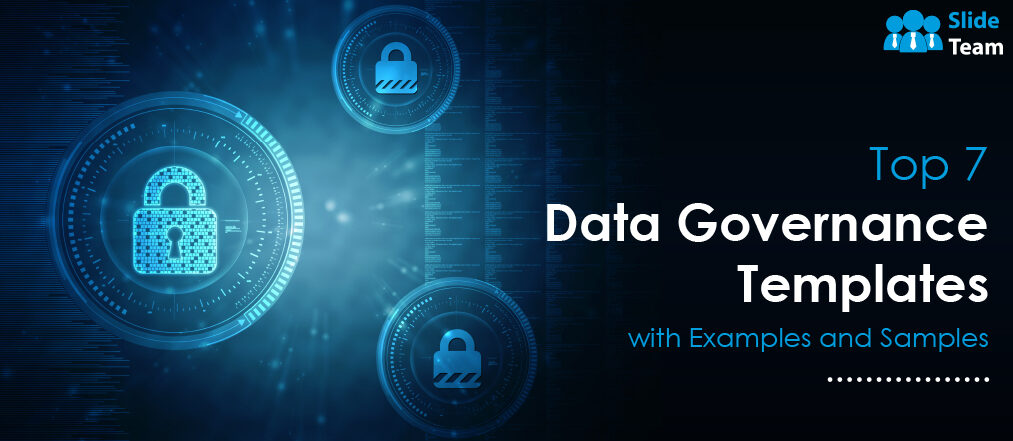


 Customer Reviews
Customer Reviews


